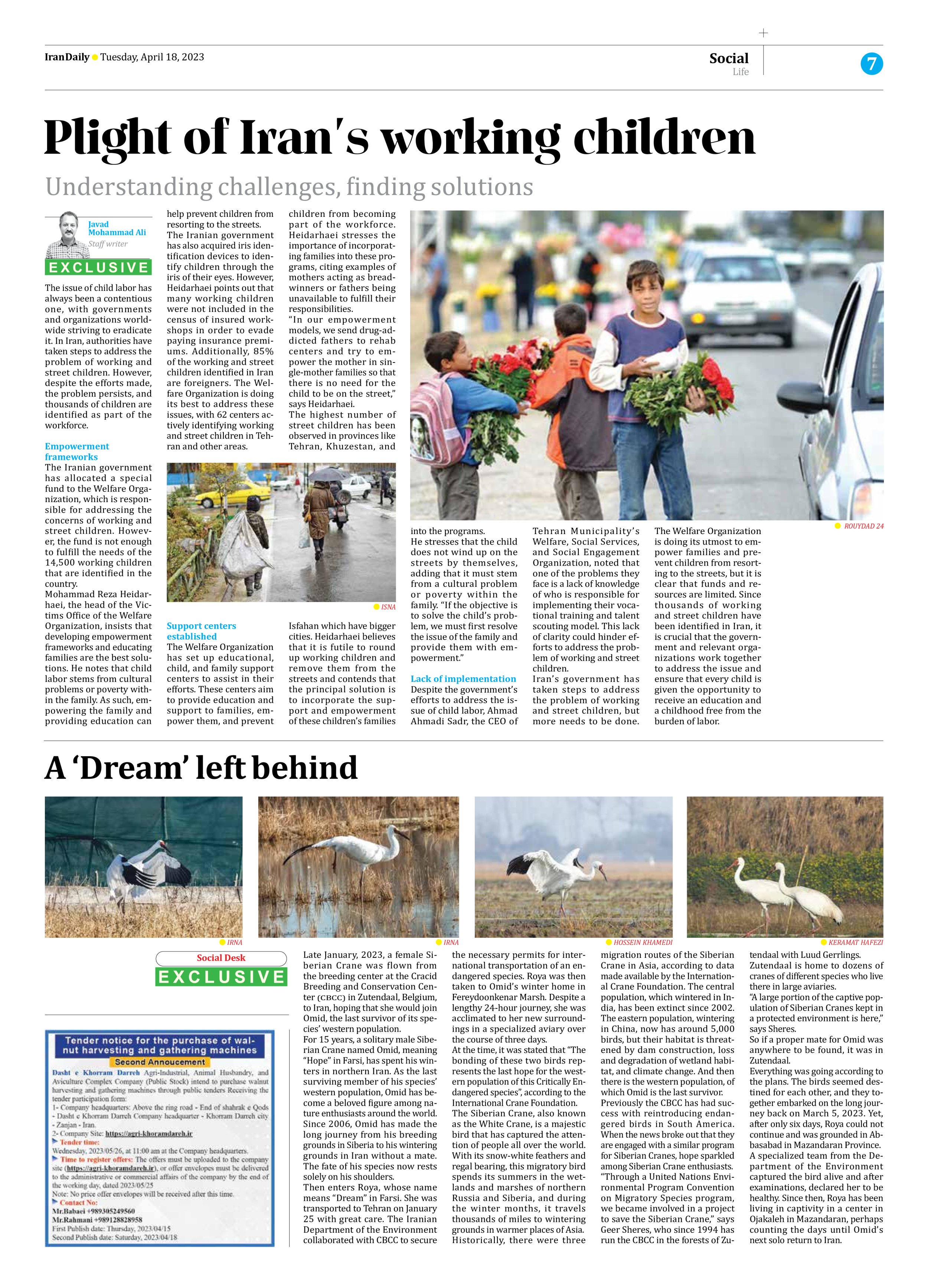
A ‘Dream’ left behind
Late January, 2023, a female Siberian Crane was flown from the breeding center at the Cracid Breeding and Conservation Center (CBCC) in Zutendaal, Belgium, to Iran, hoping that she would join Omid, the last survivor of its species’ western population.
For 15 years, a solitary male Siberian Crane named Omid, meaning “Hope” in Farsi, has spent his winters in northern Iran. As the last surviving member of his species’ western population, Omid has become a beloved figure among nature enthusiasts around the world.
Since 2006, Omid has made the long journey from his breeding grounds in Siberia to his wintering grounds in Iran without a mate. The fate of his species now rests solely on his shoulders.
Then enters Roya, whose name means “Dream” in Farsi. She was transported to Tehran on January 25 with great care. The Iranian Department of the Environment collaborated with CBCC to secure the necessary permits for international transportation of an endangered species. Roya was then taken to Omid’s winter home in Fereydoonkenar Marsh. Despite a lengthy 24-hour journey, she was acclimated to her new surroundings in a specialized aviary over the course of three days.
At the time, it was stated that “The bonding of these two birds represents the last hope for the western population of this Critically Endangered species”, according to the International Crane Foundation.
The Siberian Crane, also known as the White Crane, is a majestic bird that has captured the attention of people all over the world. With its snow-white feathers and regal bearing, this migratory bird spends its summers in the wetlands and marshes of northern Russia and Siberia, and during the winter months, it travels thousands of miles to wintering grounds in warmer places of Asia.
Historically, there were three migration routes of the Siberian Crane in Asia, according to data made available by the International Crane Foundation. The central population, which wintered in India, has been extinct since 2002. The eastern population, wintering in China, now has around 5,000 birds, but their habitat is threatened by dam construction, loss and degradation of wetland habitat, and climate change. And then there is the western population, of which Omid is the last survivor.
Previously the CBCC has had success with reintroducing endangered birds in South America. When the news broke out that they are engaged with a similar program for Siberian Cranes, hope sparkled among Siberian Crane enthusiasts.
“Through a United Nations Environmental Program Convention on Migratory Species program, we became involved in a project to save the Siberian Crane,” says Geer Sheres, who since 1994 has run the CBCC in the forests of Zutendaal with Luud Gerrlings.
Zutendaal is home to dozens of cranes of different species who live there in large aviaries.
“A large portion of the captive population of Siberian Cranes kept in a protected environment is here,” says Sheres.
So if a proper mate for Omid was anywhere to be found, it was in Zutendaal.
Everything was going according to the plans. The birds seemed destined for each other, and they together embarked on the long journey back on March 5, 2023. Yet, after only six days, Roya could not continue and was grounded in Abbasabad in Mazandaran Province.
A specialized team from the Department of the Environment captured the bird alive and after examinations, declared her to be healthy. Since then, Roya has been living in captivity in a center in Ojakaleh in Mazandaran, perhaps counting the days until Omid’s next solo return to Iran.







